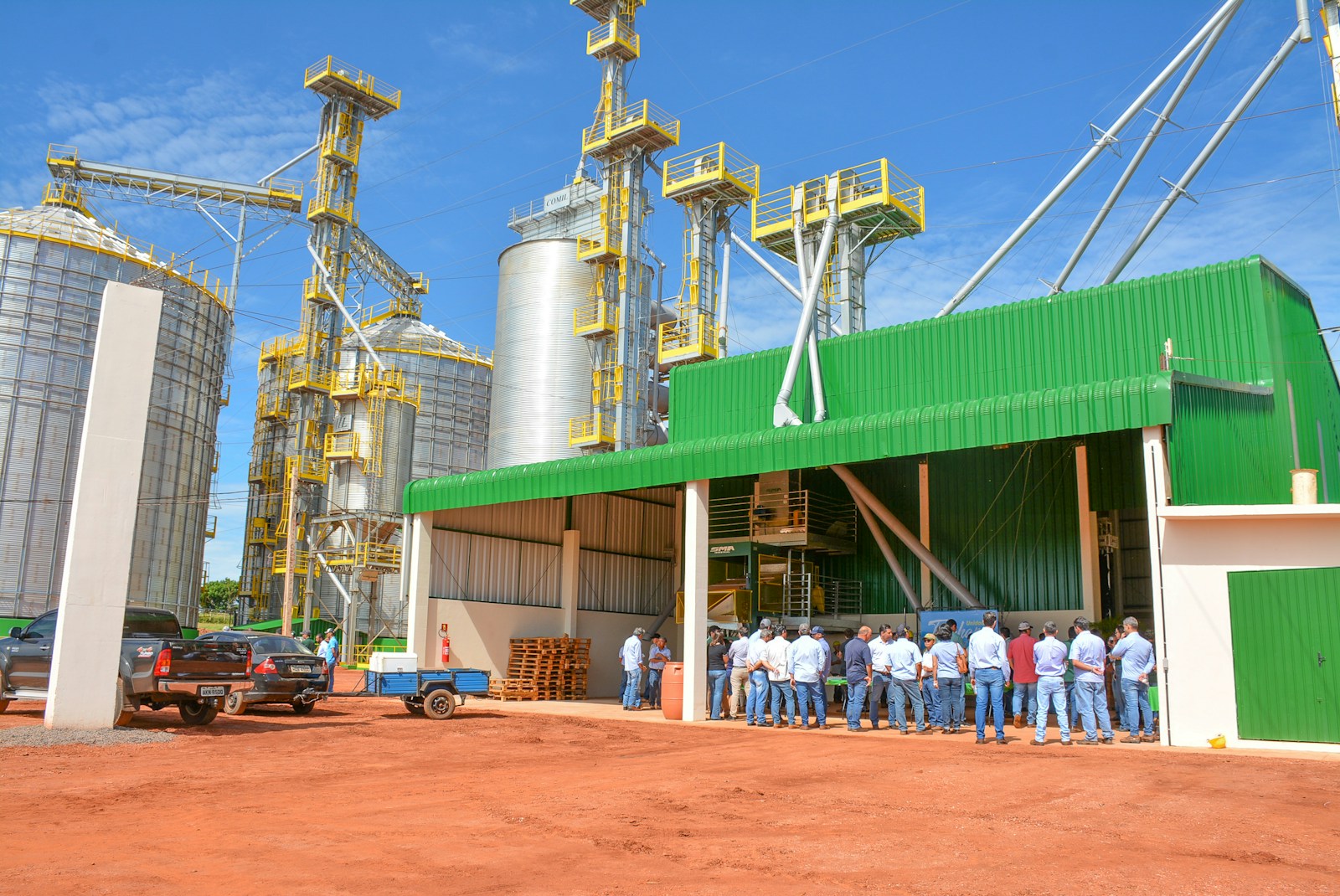Introduction
The Beeshoek shutdown is more than a local event—it’s a turning point for South Africa’s resource economy. African Rainbow Minerals (ARM) confirmed that its Beeshoek iron-ore mine, located in the Northern Cape, will enter care and maintenance after ArcelorMittal South Africa (AMSA) stopped purchasing ore.
The decision ends decades of production and affects more than 600 permanent workers. Yet behind the closure lies a larger story about power shortages, logistical inefficiencies, and weak industrial demand. The Beeshoek shutdown forces South Africa to confront questions about competitiveness, policy coherence, and the sustainability of mining towns built on single industries.
1. Beeshoek shutdown and the Domino Effect of Steel Sector Strain
The Beeshoek shutdown began when AMSA—Beeshoek’s sole buyer—halted purchases in mid-2025, citing low demand and surging energy costs. AMSA’s steel plants have faced shrinking orders due to slow construction activity, cheap imports, and expensive electricity.
When steel output drops, upstream suppliers like Beeshoek immediately feel the pinch. Without domestic demand or export channels, continued mining became uneconomic. This closure underscores how tightly connected the steel and mining sectors are: when one slows, the other stalls. A resilient industrial strategy must protect both ends of the value chain, not just one.
2. Beeshoek shutdown Exposes the Energy-Cost Squeeze
Mining’s lifeblood is energy, and the Beeshoek shutdown highlights how soaring electricity tariffs can strangle profitability. Eskom’s sharp increases and power interruptions have made consistent operations difficult.
Iron-ore beneficiation and hauling require stable power. Each outage forces costly stoppages, inflating unit costs and eroding margins. Even when commodity prices are healthy, unreliable energy can turn a viable mine into a liability.
Analysts warn that without stable, affordable power, South Africa will continue losing older mines. The Beeshoek shutdown is the clearest warning yet that energy reform must move from discussion to execution.
3. Beeshoek shutdown Shows Logistics as the Achilles’ Heel
The Beeshoek shutdown exposes the harsh reality of South Africa’s transport system. Inland mines depend on rail to reach ports or domestic buyers. Yet Transnet’s infrastructure—once a national asset—now suffers from delays, theft, and congestion.
Beeshoek’s geography made export diversification difficult; limited rail slots and high trucking costs erased profitability. While coastal mines near Saldanha Bay or Port Elizabeth can pivot to exports, inland sites remain captive to domestic buyers.
If South Africa wants to revive investor confidence, logistics must become a national priority. The future of mining will be decided not only by geology but by trains, tracks, and terminals.
4. Beeshoek shutdown and Community Shockwaves
The Beeshoek shutdown is a human story before it’s a corporate one. More than 622 permanent workers are set to lose jobs by November 2025, with ripple effects spreading across Postmasburg and Kathu. Local businesses—from grocers to mechanics—are reporting steep revenue drops.
For small towns in the Northern Cape, the mine was the heartbeat of the economy. Its payroll sustained schools, housing, and local trade. Economists estimate that for every direct mining job lost, up to four indirect jobs vanish. The closure could therefore affect nearly 2,500 people, deepening poverty in an already vulnerable region.
Managing this transition requires urgent action: retraining programs, SME support, and infrastructure investment to attract new industries.
5. Beeshoek shutdown Reflects the Need for Policy Alignment
The Beeshoek shutdown highlights a longstanding issue—policy fragmentation. Mining, energy, logistics, and trade operate under separate frameworks with limited coordination. As a result, good policies often underperform when implemented in isolation.
A coherent industrial policy would align power pricing, transport investment, and trade protection, ensuring that mining and manufacturing grow together. Beeshoek’s fate shows that even well-managed companies can collapse if the broader system fails to connect its moving parts.
Rebuilding confidence in the mining sector will require joined-up planning that unites public and private priorities under one industrial vision.
6. Beeshoek shutdown Brings Investors a Cautionary Tale
For investors, the Beeshoek shutdown serves as both a red flag and a benchmark. It demonstrates that even established mines are vulnerable to structural inefficiencies, but it also shows responsible management. ARM’s decision to place Beeshoek on care and maintenance—rather than run it at a loss—reflects sound financial discipline.
The global market values transparency and strategic decision-making. If South Africa can pair responsible closures with proactive reforms in power and transport, investor confidence can rebound. But continued policy drift could push capital toward more predictable mining jurisdictions like Australia and Brazil.
7. Beeshoek shutdown and the Shift Toward Green Transition
The Beeshoek shutdown may also spark innovation. The Northern Cape is emerging as South Africa’s renewable-energy hub, and idle mining land could host solar or wind projects. With infrastructure and grid connections already in place, Beeshoek offers potential for repurposing.
Integrating renewable generation could create new jobs, stabilize energy supply, and cut carbon footprints. By aligning mining rehabilitation with green development, ARM and government could transform a loss into a long-term opportunity. The Beeshoek shutdown might thus become a springboard for sustainable industrial reinvention.
8. Beeshoek shutdown Offers a Blueprint for Future Resilience
The final insight from the Beeshoek shutdown is about learning forward. South Africa’s mining sector must evolve beyond dependence, inefficiency, and policy inertia. The next generation of mines should prioritize:
- Market diversification: multiple buyers and export flexibility.
- Energy independence: renewable microgrids and hybrid supply.
- Efficient logistics: reliable rail, digitized ports, and private investment.
- Community sustainability: retraining, SME funding, and local procurement.
By embedding these principles, future operations can withstand shocks that crippled Beeshoek. Resilience is not a luxury—it’s survival strategy.
FAQs
Q1: What caused the Beeshoek shutdown?
The Beeshoek shutdown was triggered by ArcelorMittal South Africa halting ore purchases, leaving the mine without a viable customer.
Q2: How many jobs were affected by the Beeshoek shutdown?
Approximately 622 permanent employees and hundreds of contractors face retrenchment.
Q3: Can the Beeshoek mine reopen after the shutdown?
Yes. The site is on care and maintenance, meaning operations could resume if new buyers or export channels emerge.
Conclusion
The Beeshoek shutdown is more than a closure—it’s a wake-up call. It exposes the fragility of South Africa’s industrial network, where energy costs, logistics failures, and policy gaps collide. Yet it also presents a chance to rebuild smarter: to integrate renewables, modernize rail, and craft policies that connect mining to manufacturing once again.
If government, business, and communities collaborate, Beeshoek’s pain could fuel transformation. The Beeshoek shutdown reminds South Africa that resilience begins with reform—and that every ending can seed a new beginning.




